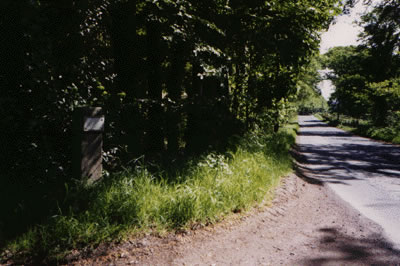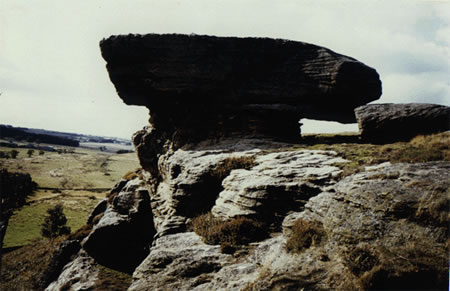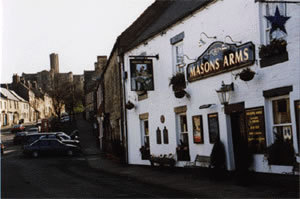The Rising Begins
 By 22 September prompt Government action had destroyed any hope of a Jacobite rising in the South of England. In the North, the Government was less successful. The Jacobite conspirators in Northumberland had managed to keep their plans entirely to themselves.
By 22 September prompt Government action had destroyed any hope of a Jacobite rising in the South of England. In the North, the Government was less successful. The Jacobite conspirators in Northumberland had managed to keep their plans entirely to themselves.
The Government certainly knew who the local leaders were and was determined to apprehend them. Sir William Cotesworth, a prominent Newcastle merchant, was appointed to deal with the Rising in the area. The Government feared that the Jacobites were likely to seize Newcastle. Cotesworth called out the militia and imprisoned known Jacobites in the town.
On September 22nd the Government issued orders for the arrest of the leading northern Jacobites. However, all were warned of the warrants, and Cotesworth, in spite of his intelligence network, was unable to establish their whereabouts. For the next two weeks Derwentwater, Widdrington and Forster played cat and mouse with the Government forces, staying one step ahead. Blackett seems to have locked himself in his house at Wallington. Perhaps Cotesworth already guessed his enthusiasm was waning. On the 22nd, Derwentwater and his brother Charles left Dilston and went into hiding. For two weeks they moved about in secret, taking shelter in the houses of friends and the cottages of tenants. Many legendary stories relate to this time. One of these describes the brothers escaping from the authorities by taking refuge in the caves at Shafto Crags. Throughout this period, they were supported by a Jacobite communication network across the county. Two Swinburne sisters from Capheaton and Mary Hodgson of Tone galloped across the county as couriers. In Hexhamshire, an area rich in Jacobite folklore, an ancient standing stone at Fourstones and some holly bushes not far from Dilston were allegedly used as Jacobite 'post boxes'.
On the 22nd, Derwentwater and his brother Charles left Dilston and went into hiding. For two weeks they moved about in secret, taking shelter in the houses of friends and the cottages of tenants. Many legendary stories relate to this time. One of these describes the brothers escaping from the authorities by taking refuge in the caves at Shafto Crags. Throughout this period, they were supported by a Jacobite communication network across the county. Two Swinburne sisters from Capheaton and Mary Hodgson of Tone galloped across the county as couriers. In Hexhamshire, an area rich in Jacobite folklore, an ancient standing stone at Fourstones and some holly bushes not far from Dilston were allegedly used as Jacobite 'post boxes'.

Shafto Crags near Wallington, Northumberland
The Mason's Arms at Walkworth, where the Jacobites feasted on the evening of 6th October, 1715This enabled Derwentwater to contact all the Jacobites in the county. On 5 October he met with them near Dilston under cover of a race meeting. Here they 'boldly resolved' that the time had come to ride out and declare openly for James III. Greenriggs, a moor between Redesmouth and Sweethope Loughs, was fixed as the muster place for the next morning. Tradition tells that Derwentwater was very reluctant to start a rising, and had to be persuaded by his wife and his brother, Charles.
 That night, Derwentwater slept for the last time at Dilston. Next morning, accompanied by his brother Charles, Thomas Errington of Beaufront, and a few servants and neighbours, he rode out to Greenriggs Moor. On the morning of 6 October, Derwentwater's small party met up with Thomas Forster and about twenty men. To their disappointment, there was no sign of Blackett. They rode across Plainfield Moor towards Rothbury, and here they were met by many of the Northumbrian gentry. They spent the night at Rothbury, and the following day rode into Warkworth, raising the Stuart standard and proclaiming James III. The small army encamped on Lesbury Common, halfway between Newcastle and Berwick.
That night, Derwentwater slept for the last time at Dilston. Next morning, accompanied by his brother Charles, Thomas Errington of Beaufront, and a few servants and neighbours, he rode out to Greenriggs Moor. On the morning of 6 October, Derwentwater's small party met up with Thomas Forster and about twenty men. To their disappointment, there was no sign of Blackett. They rode across Plainfield Moor towards Rothbury, and here they were met by many of the Northumbrian gentry. They spent the night at Rothbury, and the following day rode into Warkworth, raising the Stuart standard and proclaiming James III. The small army encamped on Lesbury Common, halfway between Newcastle and Berwick.Alone among the English Jacobites, the Northumbrians had fulfilled their promises to Mar and now awaited a Scottish invasion and a French landing. During this period Forster was appointed General of the small army. He had no military experience but it was felt that, as a Protestant, he would be more acceptable to many of the gentry.

A few more men rode in, including seventy from the Scottish Lowlands, but the army totalled only 300, far fewer than the 1,000 that had been hoped for. Derwentwater and Widdrington had hoped that all their friends and relatives would support them, while Forster 'looked on the whole body of Tories to be in it'. All were to be sorely disappointed. Why was the response so much weaker than what had been hoped for?